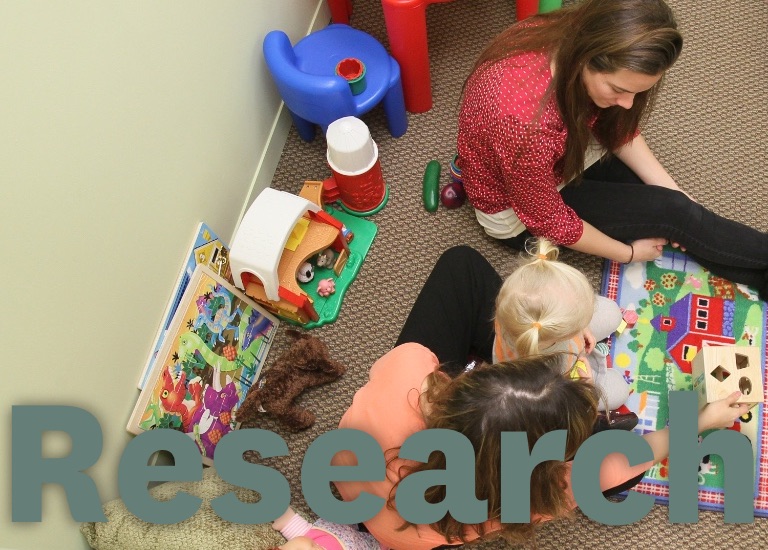Neural Basis for the Production and Perception of Prosody
ReHaB Core ⟩
CeNEC Lab ⟩
Period
Sep 2009 – Dec 2011
Prosody, the melody and intonation of speech, is an extremely important and usually undervalued component of human communication. A significant component of human social interactions depends on prosody. The aim of the present project is to explore the application of recent approaches and concepts in human brain mapping to the study of perception and production of prosody.
The initial goal of the research is to determine the degree to which perception and production of prosody rely on shared neural systems. This will be determined by an fMRI study of regions of overlap in the inferior frontal gyrus (IFG) during the perception and production of a meaningless phrase in different prosodic intonations. A second goal is to determine individual differences in this shared circuitry for perception and production. Here, we ask: Why are some people better than others at picking up subtle intonations in speech? Are such people more empathetic to the emotions of other people? Are they better at simulating another’s prosodic input onto their own motor representations? To explore these questions, subjects will complete behavioral measures in prosody production, perception, and/or empathy. Scores on these measures will be correlated with brain activity in the region of the IFG previously identified as active in that individual for both prosody perception and production. Elucidating the neural basis of prosody will make an important contribution to the neurobiology of non-verbal communication, and by extension, of social communication. Furthermore, this research will improve the understanding of the communication deficits which result from brain injury, as well as the understanding of core deficits of socially isolating neurological and psychiatric disorders (such as stroke, traumatic head injury, autism).
Funding
| Type |
Source |
Number |
Amount |
Period |
| Federal |
NIH / National Institute of Child Health and Human Development (NICHD) |
5R03HD057594-02 |
$80,190 |
Jul 2010 – Dec 2011
|
| Federal |
NIH / NICHD |
1R03HD057594-01A2 |
$81,500 |
Sep 2009 – Jun 2010
|
⋯
Publications
Journal Articles
Sheng, T., Gheytanchi, A., & Aziz-Zadeh, L. S. (2010). Default network deactivations are correlated with psychopathic personality traits. PLoS ONE, 5(9), e1261. https://doi.org/10.1371/journal.pone.0012611 Show abstract
Background. The posteromedial cortex (PMC) and medial prefrontal cortex (mPFC) are part of a network of brain regions that has been found to exhibit decreased activity during goal-oriented tasks. This network is thought to support a baseline of brain activity, and is commonly referred to as the “default network”. Although recent reports suggest that the PMC and mPFC are associated with affective, social, and self-referential processes, the relationship between these default network components and personality traits, especially those pertaining to social context, is poorly understood.
Methodology/Principal Findings. In the current investigation, we assessed the relationship between PMC and mPFC deactivations and psychopathic personality traits using fMRI and a self-report measure. We found that PMC deactivations predicted traits related to egocentricity and mPFC deactivations predicted traits related to decision-making.
Conclusions/Significance. These results suggest that the PMC and mPFC are associated with processes involving self-relevancy and affective decision-making, consistent with previous reports. More generally, these findings suggest a link between default network activity and personality traits.
Aziz-Zadeh, L. S., Sheng, T., & Gheytanchi, A. (2010). Common premotor regions for the perception and production of prosody and correlations with empathy and prosodic ability. PLoS ONE, 5(1), e8759. https://doi.org/10.1371/journal.pone.0008759 Show abstract
Background. Prosody, the melody and intonation of speech, involves the rhythm, rate, pitch and voice quality to relay linguistic and emotional information from one individual to another. A significant component of human social communication depends upon interpreting and responding to another person’s prosodic tone as well as one’s own ability to produce prosodic speech. However there has been little work on whether the perception and production of prosody share common neural processes, and if so, how these might correlate with individual differences in social ability.
Methods. The aim of the present study was to determine the degree to which perception and production of prosody rely on shared neural systems. Using fMRI, neural activity during perception and production of a meaningless phrase in different prosodic intonations was measured. Regions of overlap for production and perception of prosody were found in premotor regions, in particular the left inferior frontal gyrus (IFG). Activity in these regions was further found to correlate with how high an individual scored on two different measures of affective empathy as well as a measure on prosodic production ability.
Conclusions. These data indicate, for the first time, that areas that are important for prosody production may also be utilized for prosody perception, as well as other aspects of social communication and social understanding, such as aspects of empathy and prosodic ability.





